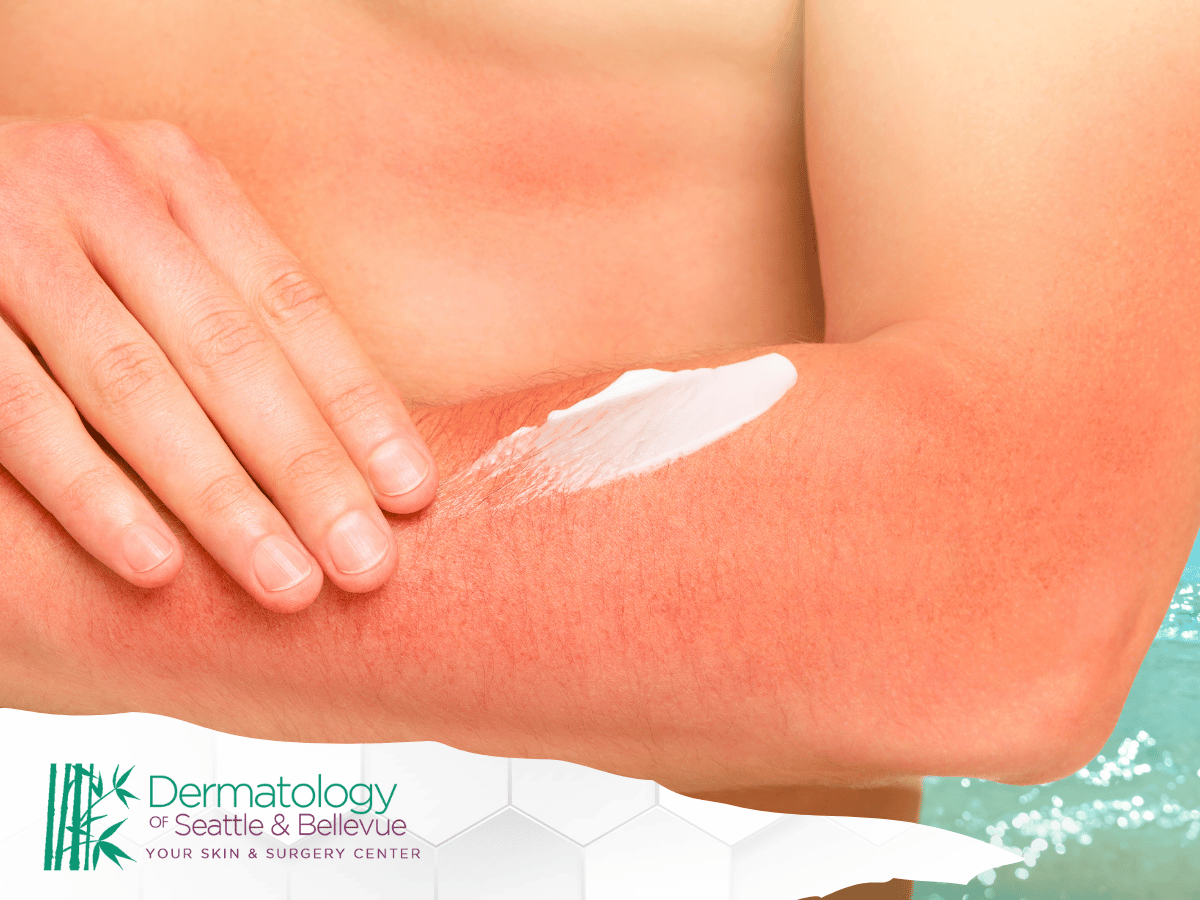Some medications can trigger unexpected skin reactions, anything from a mild drug-induced rash to serious hypersensitivity reactions like Stevens-Johnson syndrome. These reactions happen when the immune system overreacts to a medication or breaks it down in a way that irritates the skin. Recognizing drug allergy symptoms early is important because quick action can prevent complications. Common issues include hives (urticaria), measles-like rashes, fixed drug eruptions, and more severe blistering reactions. Dermatologists at Dermatology of Seattle help patients identify medication-related skin issues, recommend safe alternatives, and manage symptoms effectively. If you’ve started a new medication and developed an unexplained rash, swelling, or fever, it’s worth getting evaluated promptly.
What Are Drug-Induced Skin Reactions?
Drug-induced skin reactions happen when your body responds negatively to a medication. Reactions can be mild or severe, and early recognition is key to preventing complications.
Drug-induced skin reactions occur when a medication triggers inflammation or an immune response in the skin. This can happen minutes, hours, or even weeks after starting a new drug. Because skin reactions share symptoms with other conditions, getting a proper evaluation helps determine whether the medication is truly the cause.
What Types of Medication-Related Skin Reactions Are Most Common?
Reactions range from hives to more serious conditions like Stevens-Johnson syndrome. Knowing what each one looks like helps you respond quickly.
Urticaria (Hives)
Urticaria presents as raised, itchy welts that may appear within minutes or hours of taking a drug. This type of urticaria medication reaction is often linked to allergic responses.
Stevens-Johnson Syndrome (SJS)
Stevens-Johnson syndrome is a rare but severe reaction that starts with flu-like symptoms and progresses into a painful blistering rash. Because SJS can be life-threatening, any concern for SJS requires immediate emergency care.
Exanthematous Drug Eruptions
These reactions appear as widespread red patches resembling measles. They’re usually uncomfortable but typically not dangerous.
Fixed Drug Eruptions
These are round or oval patches that keep returning in the same spot each time you take the medication responsible.
Causes of Drug-Induced Skin Reactions
Reactions can stem from allergies, genetics, the dose of the medication, or how long you take it.
- Allergic Reactions to Drugs: The immune system may mistake a drug for a harmful substance. This leads to the release of chemicals, like histamine, that cause itching, redness, and swelling.
- Genetic Factors: Certain genetic markers can make some people more prone to hypersensitivity reactions or severe medication side effects.
- Dosage and Duration: Higher doses or long-term use increase the risk of skin rash causes related to medication.
How Do You Recognize Drug Allergy Symptoms?
If you notice a new rash, hives, swelling, or fever shortly after starting a medication, it could be a drug reaction.
Common drug allergy symptoms include:
- Itching or hives
- Red or purple skin rash
- Fever
- Swelling of the face or limbs
- Trouble breathing
Any breathing difficulty or facial swelling requires emergency care.
Diagnosis and Management
Diagnosis involves reviewing medication history and sometimes testing. Treatment usually includes stopping the drug and managing symptoms.
Diagnosis
Your provider may:
- Review the full list of medications you’re taking
- Order bloodwork or skin tests
- Use patch testing to identify specific allergens
Accurate diagnosis prevents future severe reactions.
Management
Typical steps include:
- Stopping the offending medication (under medical guidance)
- Using antihistamines to reduce itching
- Using corticosteroids to calm inflammation
- Switching to safer alternative medications
Dermatologists may also review cross-reactions between drugs to avoid future issues.
How Can You Prevent Drug-Induced Skin Reactions?
Education, accurate allergy history, and proper testing can significantly reduce risk.
Prevention Strategies
- Ask your provider about possible medication side effects.
- Consider allergy testing if you’ve reacted to medications before.
- Keep an updated medication list to avoid repeat reactions.
When to Seek Medical Attention

Seek help immediately if the rash spreads, blisters, or appears with fever or breathing trouble.
You should contact a healthcare provider urgently if:
- The rash spreads quickly or affects the face
- You develop blisters, peeling, or sores
- You have fever, swelling, or trouble breathing
- You suspect Stevens-Johnson syndrome
- Prompt evaluation can prevent serious complications.
Real-Life Case Studies
Both mild and severe drug reactions can happen,these cases show why quick action matters.
Case 1: Mild Reaction
A patient developed a mild drug-induced rash after starting a new antibiotic. Stopping the medication and switching to an alternative resolved the issue.
Case 2: Severe Reaction
Another patient showed early signs of Stevens-Johnson syndrome after taking a common pain reliever. Emergency treatment prevented long-term complications.
Conclusion
Drug-induced skin reactions can be confusing and scary, but understanding early signs helps you act quickly. Whether you’re dealing with hives, a widespread rash, or something more serious, don’t ignore new skin changes after starting a medication. Dermatology of Seattle’s clinics in Seattle, Bellevue, and Burien can help evaluate reactions, guide treatment, and coordinate safe alternatives. If something doesn’t look or feel right, it’s better to get checked as soon as possible.
FAQ
Are drug-induced rashes common?
Yes. Many medications can cause rashes, especially antibiotics, pain relievers, and anti-seizure medications. Most reactions are mild, but some require urgent care.
What medications most often cause Stevens-Johnson syndrome?
SJS is often linked to antibiotics, anti-seizure medications, and certain pain relievers. Early symptoms, fever, sore throat, and painful rash, require immediate medical attention.
Can drug allergies appear after years of taking the same medication?
Yes. Sensitivities can develop over time. Even if you’ve taken a medication for years, a new rash or reaction should be evaluated.
How long does a drug-induced rash last?
Mild rashes may resolve within a few days after stopping the medication. More severe reactions can take weeks and may need medical treatment.
Should I stop my medication immediately if I get a rash?
Don’t stop medications without medical advice, unless it’s an emergency. Call your provider or seek urgent care if symptoms are severe.









